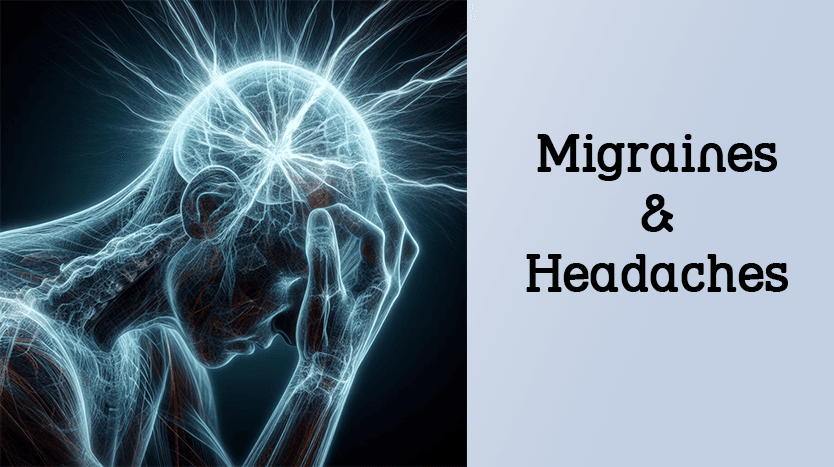
Welcome to the Positive Pulse blog! Check in with us each month for tips on healthy living, right on our website. A short snippet will be featured in the NJSAP monthly newsletter as well, which you can sign up for here.
Migraines and headaches affect more than 1 billion people around the world and are a leading cause of physical disability around the globe. Despite this, it often remains understudied and misunderstood.
Symptoms of a Migraine
If you have a migraine, you may experience an aura, or light haze, in the minutes before migraine pain appears. You also can experience blurry vision, pain on one side of your head, light, touch, smell or sound sensitivity and/or nausea.
Occasional migraines can be brought on by hormone fluctuations, stress, certain foods, lack of food or hydration, or changes in the weather. In the case of a one-time migraine, your doctor may recommend over-the-counter medicines such as nonsteroidal anti-inflammatory drugs (NSAIDs) for pain relief.
Tension Headaches
Tension headaches, which are brought on by emotional, mental or physical stress, are more common than migraines.
People who have tension headaches often complain of a band of pain across their forehead, or pressure on either side of the head. The pain is tiring, but not as severe as migraine. Migraine, on the other hand, usually hurts worse on one side of the head. And, you may experience light sensitivity, aura, or bright lines or dots in your field of vision.
Tension headaches may resolve on their own once the source of stress is gone. In these cases, over-the-counter pain medications and lifestyle adjustments may help.
Sinus Headache vs. Migraine
Pain with a runny or stuffy nose is the typical symptom of a sinus headache. But did you know that a migraine can also cause these symptoms?
The difference is in the color of your mucus: If your mucus is clear and runny, it could be a migraine. Sinus headaches can be a sign of a sinus infection that causes your mucus to thicken and sometimes turn a yellowish color.
Cluster Headache vs. Migraine
Just like migraines, cluster headaches affect one side of the head and are incredibly painful.
But unlike migraines, cluster headaches come on suddenly with a piercing pain that feels like someone stabbed you in the eye or temple with a knitting needle. Cluster headaches can also result in a stuffy nose and teary eyes.
Migraine pain usually starts with some type of signal, such as a flashing light in your visual field or a light aura. While cluster headaches can resolve quickly (within a few hours), migraines can last for days.
When to See a Doctor
See a doctor for any of these headaches or migraines if you experience them frequently, they become severe, or they are disrupting your everyday life. Seek immediate care if you have loss of consciousness or vision, frequent vomiting, or pain for more than 72 hours.
Symptom Relief:
To relieve the ill effects of a headache or migraine, you can try to find a calm environment, sleep well, eat wisely, exercise regularly, and manage your stress. Keeping a diary of your symptoms can help if you need to speak to your doctor. Find more tips for relief here.
RESOURCES:
https://www.templehealth.org/about/blog/is-it-migraine-or-headache
